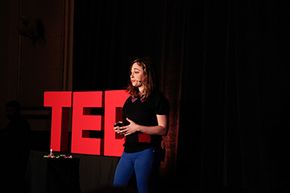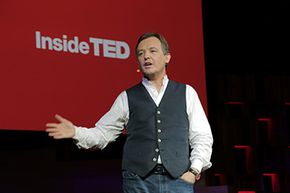Have you noticed that your friends are a lot smarter lately? You go out for lunch with your best buddy from college — the same guy who skipped class to dedicate more time to his beer can stacking skills — and he starts spouting off about the secret language of dolphins. "Since when did you care about dolphins?" you ask. "Oh, I saw it on a TED talk," he says.
You get back to the office and one of your co-workers, a young woman who is usually more concerned with celebrity dating habits than astrophysics, corners you at the copy machine to tell you all about exoplanets and the possibility of life in far reaches of the galaxy. "I didn't know you were so into science," you say. "Not really," she replies. "I just watched a TED talk about it."
Advertisement
OK, you wonder, who is this "Ted," why is he "talking" to everyone I know about things like urban revitalization, renewable energy and virtual reality, and why is this guy making me look so dumb?
TED, it turns out, is not a person at all, but a nonprofit organization dedicated to spreading innovative ideas and exciting discoveries through 18-minute talks delivered in front of live audiences at TED conferences.
TED is an acronym for technology, entertainment and design, although TED talks cover much more ground. TED talks are not only informative, but often inspirational. TED talks have surged in popularity because they are tailor-made for the social media age. Slickly produced videos of TED talks are posted for free online, and the best talks — especially the ones with a strong personal and emotional storyline — are shared all over YouTube, Facebook and Twitter.
Some people are turned off by what they see as the "elitist" or "self-righteous" attitude of TED talks — if only the world listened to the smart people on the TED stage, there would be no more problems left to solve.
But there's a reason why the most popular TED talk has been viewed more than 34 million times (as of mid-2015). In a world of "guilty pleasures" and online time-wasters, watching or listening to a good TED talk actually feels like time well-spent. You might not really change the world, but at least you'll impress your friends.
Let's dive deep into the history of TED, how TED speakers are chosen and what kind of preparation goes into making a great TED talk.
Advertisement



